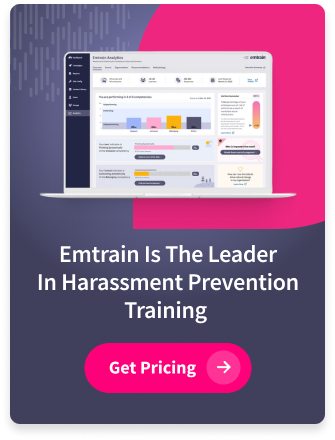As we welcome in yet another Pride month, now is an excellent time to take stock of the ways your company cares for its LGBTQIA+ employees. Pride is traditionally celebrated in June to commemorate the Stonewall Riots, when hundreds of gays and lesbians marched in protest of police mistreatment. This is an important fact to remember: Pride has always been a celebration of LGBTQIA+ life in the face of oppression. This Pride month, consider the ways your own company treats its LGBTQIA+ employee and how it can uplift its LGBTQIA+ voices inside and outside the workplace
Making Meaningful Changes
In recent years, there has been an absolute explosion in corporate promotions around Pride month, with companies from Apple to Zara releasing new logos, advertisements, and products in honor of the LGBTQIA+ community. While this level of visibility and public acceptance from large companies is undeniably positive, there has also been growing criticism of the shallowness of some companies’ promotional efforts.
Many of these Pride campaigns fall into the category of pinkwashing. Pinkwashing is where companies use the language and iconography of gay rights in their branding without meaningfully grappling with how their actions affect the LGBTQIA+ community. When a company releases Pride-themed advertisements, but still manufactures its products in a country that represses its LGBTQIA+ population, that’s an example of pinkwashing.
When thinking about how to best support your LGBTQIA+ employees it’s important to remember that rainbow logos and public statements on their own are not enough. Instead, ask yourself:
- Does our company directly or indirectly support groups who are opposed to LGBTQIA+ rights?
- Are we making real contributions to the LGBTQIA+ community beyond promotional materials?
And internally:
- Is our workforce diverse in terms of gender identity and sexuality?
- Do we have a workplace culture that makes everyone feel safe and included?
Put Your Money Where Your Mouth Is
One of the most direct ways to make a contribution to the queer community is with a donation to a pro-LGBTQIA+ nonprofit. Charities like the Trevor Project, the National Center for Transgender Equality, and Gender Spectrum all do fantastic work in advancing the rights of queer people in America. Donating to groups like these is a measurable and substantive way to make an impact. Your company can make a lump sum donation, or – as some businesses have done in the past – pledge a fraction of your proceeds to an organization.
Remember to put in the effort when researching charities to contribute to.The point shouldn’t be to create a marketing opportunity for your company, the point should be to help a community that has seen oppression and inequality.
Another way companies can support LGBTQIA+ nonprofits is through worker volunteer hours. This is where a company sets aside a certain number of paid work-hours for its employees to volunteer at charities. Businesses can leave the choice of charity up to employee or – as in this case – provide a list of queer-rights nonprofits to volunteer for. Worker volunteer hours are an excellent way for a business to contribute, as they give each employee a personal stake in the company’s mission. Through the volunteer hours, employees – especially those who are not part of the LGBTQIA+ community – can learn about queer issues, fostering a culture of diversity and inclusion within the company.
Promote Inclusive Hiring Practices
Along with supporting LGBTQIA+ issues outside of work, it’s also vital to foster an accepting and supportive environment within your workplace. When assessing the diversity of your workforce, consider whether people of many different gender identities and sexualities are represented. People of the LGBTQIA+ community often have a harder time getting hired – especially transgender people, who experience an unemployment rate twice that of the rest of the population.
If you’re a hiring manager, orient your search to actively seek out LGBTQIA+ candidates. You can use LGBTQIA+ job boards like LGBT Connect to specifically look for queer applicants. There are also several things you can do to make your recruitment process more queer-friendly as a whole, like making the language of your job postings gender neutral and offering LGBTQIA-inclusive benefits. Another step that a company can take is to start an LGBTQIA+ ERG. Having this community internally can create a better sense of belonging and inclusion for LGBTQIA+ employees and builds allyship with employees not part of the community. In addition it allows for everyone to share and learn from each other.
Educate People on LGBTQIA+ Issues
Maybe the biggest step you can take to build an inclusive workplace culture is to educate your workforce about LGBTQIA+ subjects. This is most necessary for your workers who do not identify as being part of the LGBTQIA+ community. LGBTQIA+ employees are already well aware of the challenges that face queer people. Training people on the proper usage of pronouns, avoiding deadnaming, and how to respectfully discuss issues of sexuality and gender in the workplace serves to create a supportive environment for everyone.
A positive workplace culture can have a huge impact on your team’s performance. People who feel safe around each other work more efficiently together. They will secure bringing a new idea to the table, or piping when they believe the company is making a mistake. Employees who report a high sense of belonging perform 56% more effectively than ones who don’t. Even more than that, an environment where everyone feels seen, where people feel safe being their full selves, is simply a better place to work.
Going Beyond Pride Month
All of these are steps you can take year around, not just during Pride month. As many have said before, Pride month shouldn’t be the beginning and end of our concern over LGBTQIA+ issues. Rather, it should be the catalyst for a continuous effort within the workplace and society as a whole to make sure that everyone feels accepted for who they are.
For more information on how to create an LGBTQIA+ inclusive workplace, click here.









